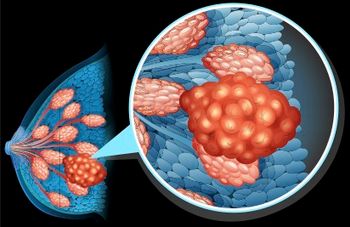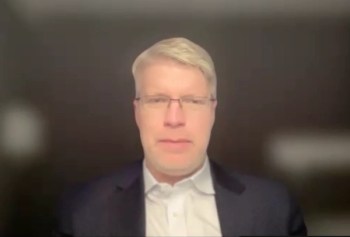
How Does SC Mosunetuzumab Compare With Other Frontline MZL Therapies?
“…if [there’s] a younger patient with MZL, I’m willing to risk a little extra toxicity to give them a longer-term remission,” said Tara M. Graff, DO, MS.
According to Tara M. Graff, DO, MS, the current treatment landscape for marginal zone lymphoma (MZL) does not have many available options, and one of the most common, single-agent rituximab (Rituxan), acts as a temporary band-aid. Single-agent subcutaneous mosunetuzumab may overcome that obstacle.
In an interview following her presentation on updated results from the phase 2 MorningSun trial (NCT02500407) at the
With a follow-up of 18 months, the rate of complete response with mosunetuzumab in all patients was 64%, and this figure remained consistent across various high-risk subgroups. If, over longer follow-up, subcutaneous mosunetuzumab retains that rate, it may become one of the best available options for patients.
Graff is the director of Clinical Research at Mission Cancer and Blood.
Transcript:
Currently, for [frontline MZL], there aren’t a ton of options. It’s chemoimmunotherapy, so bendamustine and [rituximab (Rituxan)], or, what you’ll see a lot throughout the country, is just single-agent [rituximab] use. Physicians will put their patients on [rituximab], give them 4 doses over the course of a month, maybe put them on maintenance, then stop it. They’ll be in remission for 2 or 3 years, maybe even longer, [but then] they’ll come out of remission, and [their physician’s] put them back on [rituximab], but by itself. It’s almost like a band-aid.
People even asked me today, after I presented, “Well, why should we use mosunetuzumab, which has a little bit of increased toxicity, when we can just use [rituximab]?” Yes, [rituximab] has done a fine job, but it’s also a band-aid. You’re slapping a band-aid on. People are staying in remission, coming back out, [and you’re] putting the band-aid back on. For some patients, that’s enough, but if [there’s] a younger patient with MZL, I’m willing to risk a little extra toxicity to give them a longer-term remission.
Now, we need longer-term data. Right now, all we have is 18 months of follow-up. If we see, at 5 years, that 65% of patients are still in a complete remission, then you have your frontline choice. Clearly, giving single-agent mosunetuzumab is going to be better than single-agent [rituximab], but that’s not the trial. We’re not comparing single-agent mosunetuzumab with single-agent [rituximab] in the front line. It was a basket trial. Everybody got the drug. Right now, all we’re going on is what we’re seeing from the data. Conventionally, as of today, the options are single-agent [rituximab], bendamustine and [rituximab], and some combination of chemoimmunotherapy. There are trials looking at different BTK inhibitors in [MZL], but right now, we don’t have the novel therapy treatment landscape that we do in follicular [lymphoma], diffuse large B-cell lymphoma, and even [chronic lymphocytic leukemia] and other forms of lymphoma.
References
Burke JM, Tun AM, Villasboas J, et al. MorningSun: open-label phase II trial of the efficacy and safety of subcutaneous mosunetuzumab as frontline treatment in symptomatic patients with marginal zone lymphoma. Presented at the Society of Hematologic Oncology 2025 Annual Meeting; September 2-6, 2025; Houston, TX. Abstract IBCL-1494.
Newsletter
Stay up to date on recent advances in the multidisciplinary approach to cancer.



















































































